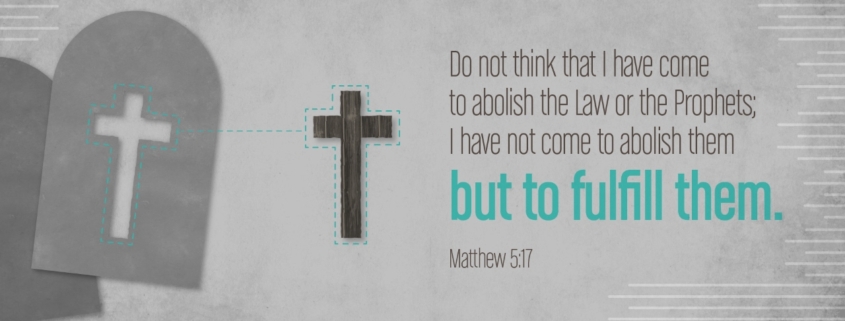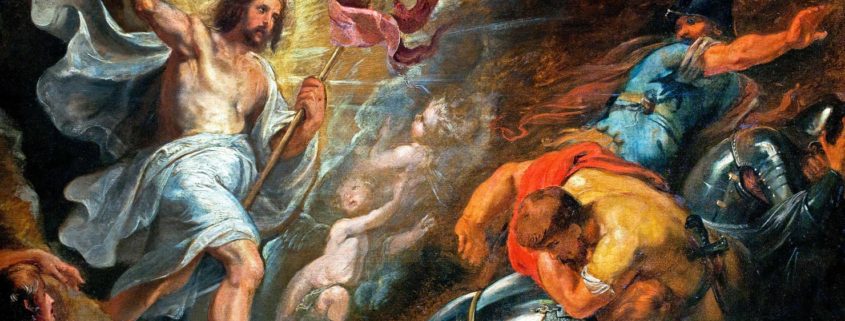Join us for our next Faith Explained pilgrimage! Message us here: TheFaithExplained.com/contact and we’ll keep you updated.
Posts
Here’s my December article for Catholic Answers Magazine. Merry Christmas!
“The beginning of the gospel of Jesus Christ, the Son of God” (Mark 1:1).
The Gospel of Mark doesn’t have an “infancy narrative” about the events surrounding Jesus’ conception and birth as do Matthew and Luke. Rather, Mark begins in a deceptively simple manner with these opening words, known as an incipit.
Almost 2,000 years after these words were originally inscribed on parchment, we tend to read this line and think nothing much of it—perhaps even yawn—because it’s something we’ve heard many times before. And yet with this simple sentence, Mark would have absolutely shocked the entire world, arresting the attention of pious Jews and pagan Romans alike.
With respect to a Jewish audience, it’s easy to see why: in calling Jesus the Christ, Mark signals that he the long-awaited Jewish Messiah. But it’s the term Son of God that would have raised many a Roman eyebrow (remember—Mark’s Gospel was written to the Church at Rome, where he served as the chronicler of Peter’s memoirs of the Lord). Why is that?
Mark has a big problem as he tries to convince Romans that they should commit their lives to Jesus—and the crux of the matter is the cross itself. Who was the most powerful person in the Roman Empire? Why, the emperor himself, obviously. The Roman Caesars were crowned in an elaborate ceremony in which they were draped in a royal purple robe, with great pomp, amidst shouts of “Hail, Caesar!” When a new emperor ascended to the throne, or when Rome scored a great military victory, it was published throughout the empire as “Good News.”
In contrast, the most powerless person in the empire was the victim of crucifixion. This was an ordeal so brutal, so violent, so humiliating, that it was almost never administered to Rome’s own citizens (for whom the comparatively humane act of beheading was the preferred method of execution, as in St. Paul’s case). The contrast between the mighty Caesar and the seemingly defeated Jesus couldn’t have been more stark. This is why one major commentator on Mark calls that Gospel an “apology for the cross.”
We could add to this the many public inscriptions that have been unearthed from Rome’s ruins. These served as a civic catechism of sorts, proclaiming what one was supposed to know and believe as a citizen. And one thing all Romans were expected to assent to was this: not only was the emperor extremely powerful, he was to be considered the divine “son of god.” Here are just a few examples from a much longer list compiled by Craig Evans:
- Julius Caesar (48-44 B.C.):
An inscription from Ephesus describes him as “the manifest god from Ares and Aphrodite, and universal savior of human life.” Also, from Carthaea: “The Carthaean people honor the god and emperor and savior of the inhabited world, Gaius Julius Caesar, son of Gaius Caesar” (there are many more such inscriptions from the period).
- Augustus (30 B.C.-A.D. 14):
“Emperor Caesar Augustus, son of god”; “Emperor Caesar (Augustus), god from god”; “Emperor Caesar Augustus, savior and benefactor.” An inscription from Priene celebrates Augustus’s birthday as “the birthday of the god.”
- Tiberius (A.D. 14-37, who reigned when Jesus was crucified):
“Emperor Tiberius Caesar Augustus, son of god”; and “Emperor Tiberius Caesar, new Augustus, son of god, Zeus the liberator”.
- Nero (the crazed emperor who reigned from A.D. 54-68—there are some real doozies here):
“Nero Caesar, the lord”; “Nero Claudius Caesar… the savior and benefactor of the inhabited world”; “The good god of the inhabited world, the beginning and existence of all good things”; “the son of the greatest of the gods”; and “Nero, the lord of the whole world”.
So, in light of this exalted view of their emperor, why should citizens of Rome choose to pledge their allegiance to Jesus and not Caesar? Readers or hearers of Mark would no doubt be asking this question as they experienced this Gospel. Well, its account of Jesus’ authoritative teaching about the Kingdom, backed up with powerful exorcisms and healings, would no doubt have made an impression.
But so too would the presence in Mark’s Passion narrative of someone whom we might easily overlook: the figure of the Roman centurion who sees Jesus die.
The centurion, whose ultimate superior is Caesar, the alleged “son of god,” may have been aware of how his fellows had humiliated Jesus in a mock “coronation” replete with purple robe and a crown of thorns, and shouts not of “Hail Caesar” but, “Hail, King of the Jews!” as they beat him mercilessly (Mark 15:16-20). Yet somehow, as he watches Jesus die on the throne of the cross, and witnesses the powerful release of Jesus’ spirit, which tears the temple curtain in two, the centurion is granted the grace to recognize that one far greater than Caesar is here: “Surely this man” — and not Caesar — “is the Son of God” (15:37-39).
This was the very statement—politically perilous and subversive—that Roman Christians had to make their own. A statement about who truly possessed a sovereign claim over the world. Many of them were to stare down the absolute claims and power of the state and pay for it with their lives, as Jesus did. Peter himself, the source behind Mark’s Gospel, would also meet the horrific cross.
As we prepare to celebrate the true “birthday of the God” this Christmas, let us reflect on the kingship Jesus claims over our lives. Having conquered the grave, a foe no earthly ruler, however exalted, has ever defeated, he is worthy of it.
My latest for Catholic Answers Magazine.
Once, in Jerusalem, I was privileged to attend Mass with a group of Catholics who had converted from Judaism and celebrated the Mass in Hebrew. None of those present who had come to believe in Yeshua HaMashiach (Jesus the Messiah) would have said they had “changed religions.” They didn’t view the Catholic Church as a new religion that had replaced Judaism—rather, it was Judaism, but with the Messiah having come.
For these converts, many facets of New Covenant worship evoked elements of the Old: features such as the tabernacle, the ambo, and the altar made sense to them in a way that they may not for those who convert to Catholicism from non-Christian or Protestant Christian backgrounds. And the similarities didn’t end with liturgy. They didn’t see Catholicism’s doctrines as something foreign, either. Rather, they saw the continuity, the inner logic, of Jesus’ teachings vis-a-vis the Old Testament.
Considering that Jesus of Nazareth was a faithful Jew, this really shouldn’t be a surprise. Yet throughout the centuries until now, many theologians and scholars have believed the opposite: that Jesus broke clean with the Old Covenant religion of his day, railing against its “legalism” and focusing instead entirely on God’s mercy and love.
Without a doubt, Jesus delighted in dispensing God’s mercy to those who repented of sin. But there is no opposition between mercy and law. In fact, in so many ways, God’s law is an expression of his mercy. A careful reading of the New Testament shows that Jesus was in no way opposed the law given to Moses.
Open your Bible and let’s take a look together.
For example: in the Gospel of Matthew Jesus gives five major discourses that represent the crucial emphases of his teaching that the evangelist wished to impart to his audience. The first is the Sermon on the Mount, in chapters 5-7. The second is the Missionary Discourse in chapter 10, followed by the Parabolic Discourse in chapter 13 and the Community Discourse in chapter 18. The fifth and final speech is the Eschatological Discourse in chapters 24-25.
We have several reasons to believe that Matthew intentionally arranged this material into five “teaching blocks.” First, there are literary clues. Each discourse concludes with the verb telein (“to finish”—cf. Matt. 7:28, 11:1, 13:53, 19:1, 26:1). This corresponds to verbiage from the Pentateuch: “When Moses finished (suntelein) speaking all these words” (Deut. 31:1; cf. Num. 16:31; Deut. 31:24, 32:45).
I’ve discussed elsewhere how Jesus is presented in Matthew as a new Moses. Matthew’s arrangement of Christ’s teaching into five narrative segments is meant to allude to the five books of Moses, the first five books of the Hebrew Bible. Why? In large measure to deal with the allegations of some Jews that Jesus and his followers intended to abolish the Law of Moses. This is an important theme in Matthew’s Gospel, intended as it is for a primarily Hebrew audience.
The number five (are you sensing a theme here?) comes into play most clearly in the material following Matthew 5:17-20, which is the key passage, in many ways, to understanding the Sermon on the Mount. In these verses, Jesus explains that he has “not come to abolish the law, but to fulfill” (v. 17), and that “until heaven and earth pass away, not one letter, not one stroke of a letter, will pass from the law until all is accomplished” (v. 18). Jesus also states that lawbreakers (such as he is accused of being) “will be called least in the kingdom of heaven; but whoever does them and teaches them (the commandments of the law) will be called great in the kingdom of heaven” (v. 19).
Then Jesus states that, in order to enter the kingdom of heaven, one’s “righteousness” must be greater than that of the scribes and Pharisees (v. 20). This is truly a remarkable statement, because in Jesus’ day those very scribes and Pharisees were considered theauthority on the interpretation of the Law of Moses.
This highlights the main issue: who has the true interpretation of the law? Jesus and his followers? The Pharisees and scribes? Some other group?
Jesus goes on to show, by means of a series of five “antitheses” (“You have heard it said . . . but I say to you”), that his interpretation of the law, as practiced by himself and his followers, is the true interpretation—and indeed, the fulfillment—of the law given to Moses. These five antitheses correspond to the five fulfilments of Old Testament prophecy given in the infancy narrative of Matthew (1:22-23, fulfilling Isaiah 7:14; 2:5-6, fulfilling Micah 5:2; 2:15, fulfilling Hosea 11:1; 2:17-18, fulfilling Jeremiah 31:15; and 2:23, which summarizes Judges 13:5 and Isaiah 11:1). Together, they make a powerful case that Jesus has come to fulfill the law and the prophets.
Specifically, the five antitheses of the Sermon on the Mount fulfill five aspects of the books of Moses: Deuteronomy 5:17 is fulfilled in Matthew 5:21; Exodus 20:14 is fulfilled in Matthew 5:27; Leviticus 19:12 is fulfilled in Matthew 5:33; Exodus 21:23-25 is fulfilled in Matthew 5:38; and Leviticus 19:17-18 is fulfilled in Matthew 5:43.
Many “historical Jesus” scholars, when assessing whether Jesus could have plausibly taught what the Gospels claim he did, are fond of employing something called the criterion of double dissimilarity. “If something sounds too much like the teaching of Judaism,” the thinking goes, “or too much like later Church teaching, Jesus probably didn’t say it.” That has always sounded ridiculous to me, considering that Jesus was Jewish and that he founded the Church! We should expect to find an abundance of continuity between the Old Testament, the teaching of Jesus, and that of the Church. And this is exactly what we do find.
And here’s one final, commonsense fact: if Jesus, as many caricatures of him suggest, really represented a radical break with Jewish teaching, there is simply no plausible way he would have garnered such a massive following among his fellow Israelites. No one would have believed that he was the promised Messiah if he had rejected the Law of Moses!
It seems reasonable, then, to believe the opposite, which is exactly what Jesus set out to do: not to abolish the law but to fulfill it (Matt. 5:17).
Here’s my latest piece for Catholic Answers. Hope you enjoy it. — Cale
Every Easter season we encounter articles, documentaries, books, and news reports suggesting that the canonical Gospels got the Resurrection wrong. Scholars with impressive credentials appear in the media to tell us that, if we want the full story about Easter, we must turn to what are known as the apocryphal Gospels.
It often comes as a surprise to Christians to learn that there were many other “Gospels” that circulated in the decades and centuries after the composition of Matthew, Mark, Luke, and John, but never made it into the New Testament. Some of these have survived to our day, to the fascination of scholar and layman alike. But do these works indeed provide credible information about Jesus that isn’t in the Bible?
A professor of mine always gave this advice to students who were curious about these writings: “Just read them,” he said, “and ask yourself this question: do you really think they smack of authenticity?” Some of the scholars who champion the apocryphal Gospels imply that the Church hid these documents from the people because they contain the “real” story about Jesus. But reading them, as Dr. Evans knew, shows that the Church had very good reasons for not canonizing these works. Far from radiating authenticity, they come across as quite strange and not reliable historically.
Let’s take one example of these texts, the Gospel of Peter, and compare its Easter narrative to that in the Gospel of Matthew.
Matthew’s account of the Resurrection, written in the first century, is sober and rather restrained—especially compared with the account in the Gospel of Peter, a highly embellished collection of legends likely written in the second century. (No, it wasn’t actually written by Peter, don’t worry—later writers would attribute their works to apostles in an attempt to gain credibility).
Far from being an early, original source of material on the life of Jesus, the Gospel of Peter is actually dependent on the canonical Gospel of Matthew for much of its content. Its unbelievable reworking of the Resurrection account in Matthew includes—get this—a talking cross that emerges from Jesus’ tomb along with the risen Jesus and two angels, all of whom are so tall that their heads are, quite literally, in the clouds (39-43). It also mentions many other elements that a Jewish audience would find implausible and ahistorical, such as members of the Jerusalem religious elite pitching tents and sleeping among the tombs with Roman soldiers, making sure Jesus stays dead (33, 38). Ever heard of uncleanness and ritual impurity? Hello!
The Gospel of Peter therefore lacks what is called verisimilitude. Its miraculous details seem purposely fantastic. It doesn’t cohere with the way things actually were in Jesus’ time and place. Readers of Matthew’s Easter account, especially those of a Jewish background, would have found its Easter account much more credible and persuasive. Let’s look at some of its details.
Facets of Matthew’s account of Jesus’ burial later become important proofs for Jesus’ resurrection. The mention of Joseph of Arimathea’s donation of a new tomb for Jesus burial (Matt. 27:57-61) is significant. Joseph, who is mentioned in all four Gospels and undoubtedly a historical personage, was a member of the Sanhedrin, and thus a known public figure. This means that the location of Jesus’ tomb was also known to friend and foe alike. If Jesus’ remains were still entombed following Easter, it would have been easy to prove this by searching Joseph’s tomb. However, even the enemies of the nascent Christian movement do not dispute the empty tomb (Matt. 28:11-15). Matthew also notes that many of Jesus’ women followers saw the place where Jesus was buried (27:56; 27:61; 28:1-8), discrediting any theory that the women went to the wrong tomb on Sunday morning.
Among the canonical Gospels, only Matthew’s mentions the presence of Roman guards at the tomb, a point that many critics of the Gospel dispute. The Gospel of Peter also mentions the guards, though again with legendary accretions. Even so, this demonstrates that the guard account was an enduring aspect of the apologetic for the Resurrection. Therefore it is more certain, from a historical perspective, that guards were in fact present.
The chief priests, after hearing “everything that had happened” from the guards, bribed the soldiers to propagate the story that the disciples of Jesus stole his body from the tomb while they slept (a first-century edition of “fake news,” one might say). Matthew reports that, at the time of the writing of his Gospel, this version of events was still being told among the Jews (Matt. 28:11-15). In fact, this story became a well-entrenched facet of an anti-Christian Jewish apologetic, for Justin Martyr, writing in the second century A.D.,states that it was still being circulated in his time.
The guards’ probable historicity is even further bolstered by the edict of Caesar, possibly enacted in Galilee in the first century, decreeing capital punishment for grave robbers. The fact that tampering with Jesus’ tomb would have been punishable by both Jewish and Roman authorities, and that the tomb, according to Matthew, was sealed (Matt. 27:66), make any potential moving of Jesus’ body from the tomb highly unlikely in this case.
Add to that the fact that liars usually make terrible martyrs (why would the disciples later die for their belief in the Resurrection, if they had in fact stolen the body?), and one has a very solid case for the empty tomb. Again, even the enemies of the Christian movement admit the tomb is empty, and enemy attestation is excellent evidence.
But, of course, an empty tomb alone does not a resurrection make. This is why Matthew’s accounts of the appearances of the risen Jesus are so important. That Mary Magdalene and the other women “took hold of his feet” (Matt. 28:9) affirms the corporeal (bodily) nature of Jesus’ resurrection, making the same point as Luke 24:36-43 and John 20:24-29.
Matthew’s very mention of women as the first to discover the empty tomb on Sunday morning, encounter the resurrected Jesus, and inform the male disciples of the event is, in all likelihood, historical. Given the (unfortunately) very biased and low view of the testimony of women in both Jewish and Greco-Roman settings of the time, Matthew (and the other Gospel writers) would never have mentioned this unless it was factual. Consider these quotes from Jewish sources of the general period:
Sooner let the words of the Law be burnt than delivered to women (Talmud, Sotah 19a).
But let not the testimony of women be admitted, on account of the levity and boldness of their sex…since it is probable that they may not speak truth, either out of hope of gain, or fear of punishment (Josephus, Antiquities 4.8.15).
Any evidence which a woman (gives) is not valid (to offer)…This is equivalent to saying that one who is rabbinically accounted a robber is qualified to give the same evidence as a woman (Talmud, Rosh Hashannah 1.8).
The bizarre Gospel of Peter instead describes many prominent maleenemies of Jesus as witnesses to his resurrection. What a stark contrast to Matthew, who not only presents women as the first eyewitnesses of the risen Christ, but does not claim that anyonewitnessed the resurrection event itself. This striking omission, perhaps above all the other differences, testifies to the sober realism of Matthew and the other Gospels over the fantasies of apocryphal texts.
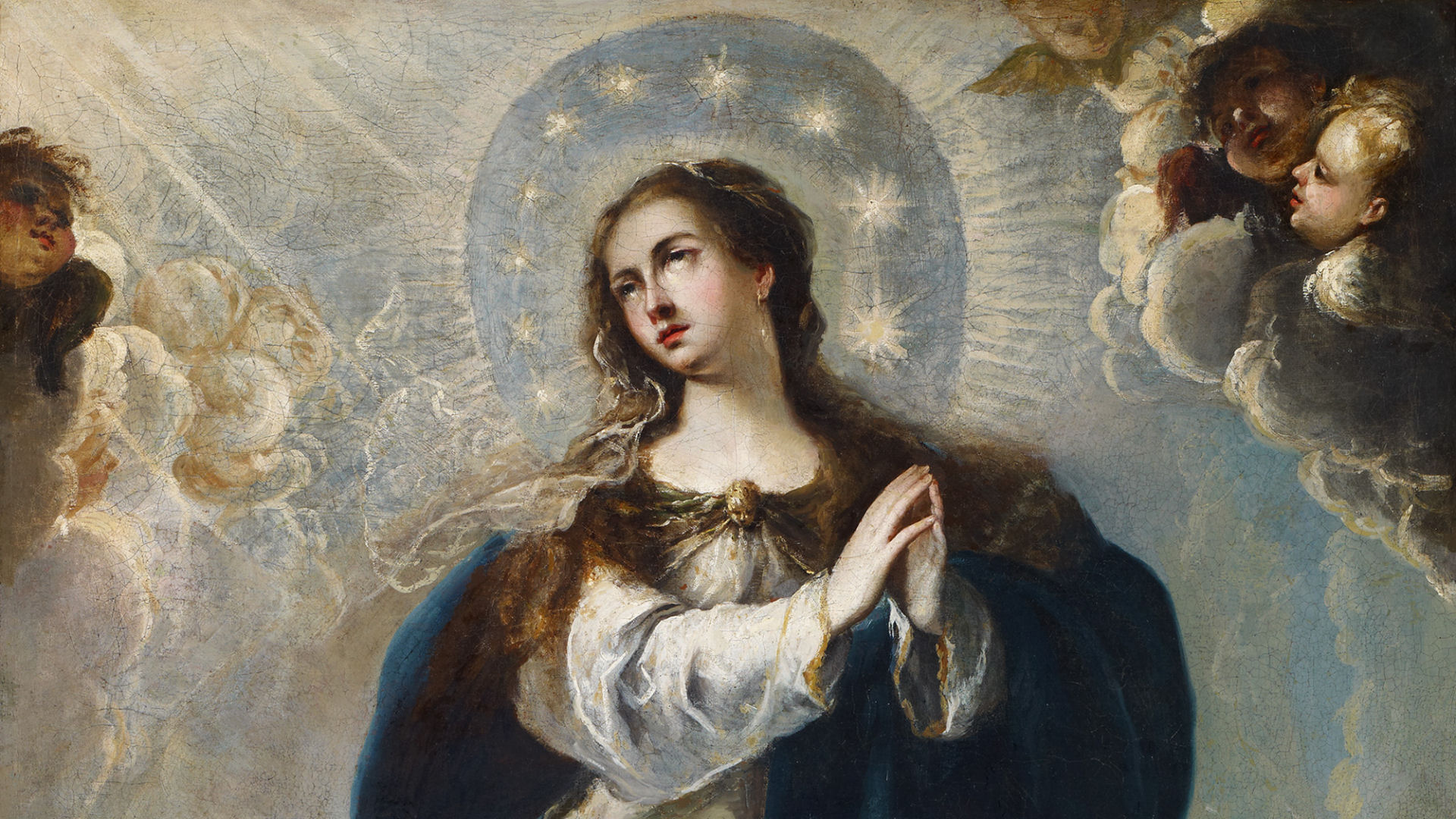
Today, December 8, marks the great Solemnity of the Immaculate Conception of Mary. And it’s certainly a doctrine misunderstood by many. The Immaculate Conception is not the Virginal Conception of Jesus. Nor does it have anything to do with this, sports fans.
Here’s the actual definition, from Blessed Pope Pius IX, the beloved “Pio Nono”:
We declare, pronounce, and define that the doctrine which holds that the most Blessed Virgin Mary, in the first instance of her conception, by a singular grace and privilege granted by Almighty God, in view of the merits of Jesus Christ, the Savior of the human race, was preserved free from all stain of original sin, is a doctrine revealed by God and therefore to be believed firmly and constantly by all the faithful.
–Ineffabilis Deus, Apostolic Constitution of Pope Pius IX solemnly defining the dogma of the Immaculate Conception, 8 December 1854.
the basis for the Immaculate Conception of Mary in the New Testament is well-known, but today I’d like to share about one of the ways the doctrine is foreshadowed in the Old Testament. In his masterful devotional series, In Conversation with God, Francis Fernandez writes about Mary as the new Temple in which God dwells:
In the litany of Loreto we call upon Mary, House of Gold, the abode of greatest conceivable splendor. When a family turns a house into a home by taking up residence there, the place reflects the individual qualities of the people. They accentuate the beauty of the dwelling place. Just like the Holy Spirit dwelling in Our Lady, the home and its inhabitants make up a particular unity, in much the same way as the body and its garments do. The foremost Tabernacle in the Old Testament, later to be the Temple, is the House of God, where the meeting of Yahweh and his people takes place. When Solomon makes the decision to build the Temple, the Prophets specify that the best available materials are to be used – abundant cedar wood on the inside and clad with gold on the outside. The most highly skilled craftsmen are to work on its construction.
Before God made known his coming into the world in the fullness of time, He prepared Mary as the suitable creature within whom He would dwell for nine months, from the moment of his Incarnation until his birth in Bethlehem. Evidence of God’s power and love show forth in his creation. Mary is the House of Gold, the new Temple of God, and is adorned with so great a beauty that no greater perfection is possible. The grace of her Immaculate Conception, including all the graces and gifts God ever bestowed on her soul, are directed towards the fulfillment of her divine Maternity.
God’s gift of supernatural life to her exceeds that of all the Apostles, Martyrs, Confessors and Virgins combined. It reaches far beyond the experience of anyone who has ever lived, or ever will live, until the end of time. God dwells in Our Lady more than in all the angels and saints, since the foundation of the world, taken together. Truly God has prepared a human vessel in keeping with the dignity of his eternal Son. When we say that Mary has an almost infinite dignity, we mean that among all God’s creatures she is the one who enjoys the most intimate relationship with the Blessed Trinity. Her absolute honor is the highest possible and her majesty is in every way unique. She is the firstborn and most highly favored daughter of the Father, as she has often been called throughout the history of the Church, and as has been reiterated by the Second Vatican Council, Our Lady’s blood relationship with Jesus Christ, the Son of God, leads her to a singular relationship with him.
Mary indeed became the new Temple and Tabernacle of God.
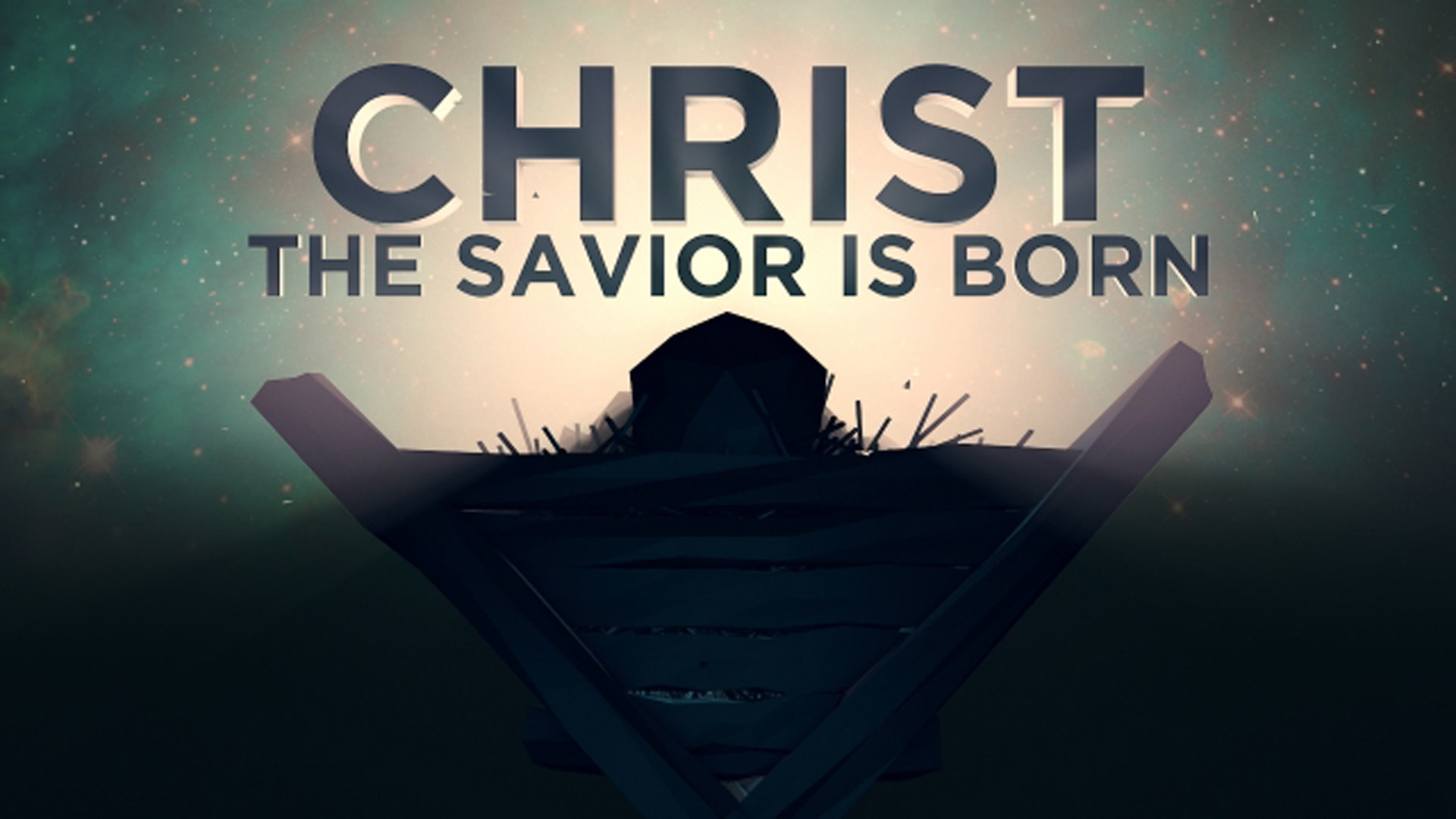
Matthew and Luke are the only two Gospel writers who include an infancy narrative in their biographies of Jesus. According to the most widely accepted theory about how the Gospels were composed, Matthew and Luke wrote independently of one another. That is, Matthew did not have a copy of Luke’s Gospel on his desk when writing his Gospel, as it were, and vice versa.
Having said that, it is amazing that these two birth narratives almost never cover the same events! But in the few instances that they do, they are in agreement. The famous biblical scholar Father Raymond Brown pointed out eleven points (reproduced in Monette, The Wrong Jesus, pp. 108-109) at which Matthew and Luke’s accounts are in accord with one another:
1. Mary and Joseph are legally engaged but haven’t lived together (see Matthew 1:18; Luke 1:27,34).
2. Joseph is from King David’s lineage (see Matthew 1:16,20; Luke 1:27,32; 2:4).
3. Angels announce the forthcoming birth of the baby (see Matthew 1:20-23; Luke 1:30-35).
4. Mary becomes pregnant as a virgin (see Matthew 1:20,23,25; Luke 1:34).
5. The child is conceived through the work of the Holy Spirit (see Matthew 1:18,20; Luke 1:35).
6. An angel proclaims that the child’s name will be Jesus (see Matthew 1:21; Luke 1:31).
7. An angel states that Jesus is to be the Saviour (see Matthew 1:21; Luke 2:11).
8. The birth of Jesus happens after Mary and Joseph began living together as spouses (see Matthew 1:24-25; Luke 2:5-6).
9. Jesus is born in Bethlehem (see Matthew 2:1; Luke 2:4-6).
10. Herod the Great is in power during the time of the birth of Jesus (see Matthew 2:1; Luke 1:5).
11. Jesus is raised in Nazareth (see Matthew 2:23; Luke 2:39).
The fact that these two independent sources on Jesus’ infancy are in agreement on all these major details gives us greater confidence that we can trust these accounts.
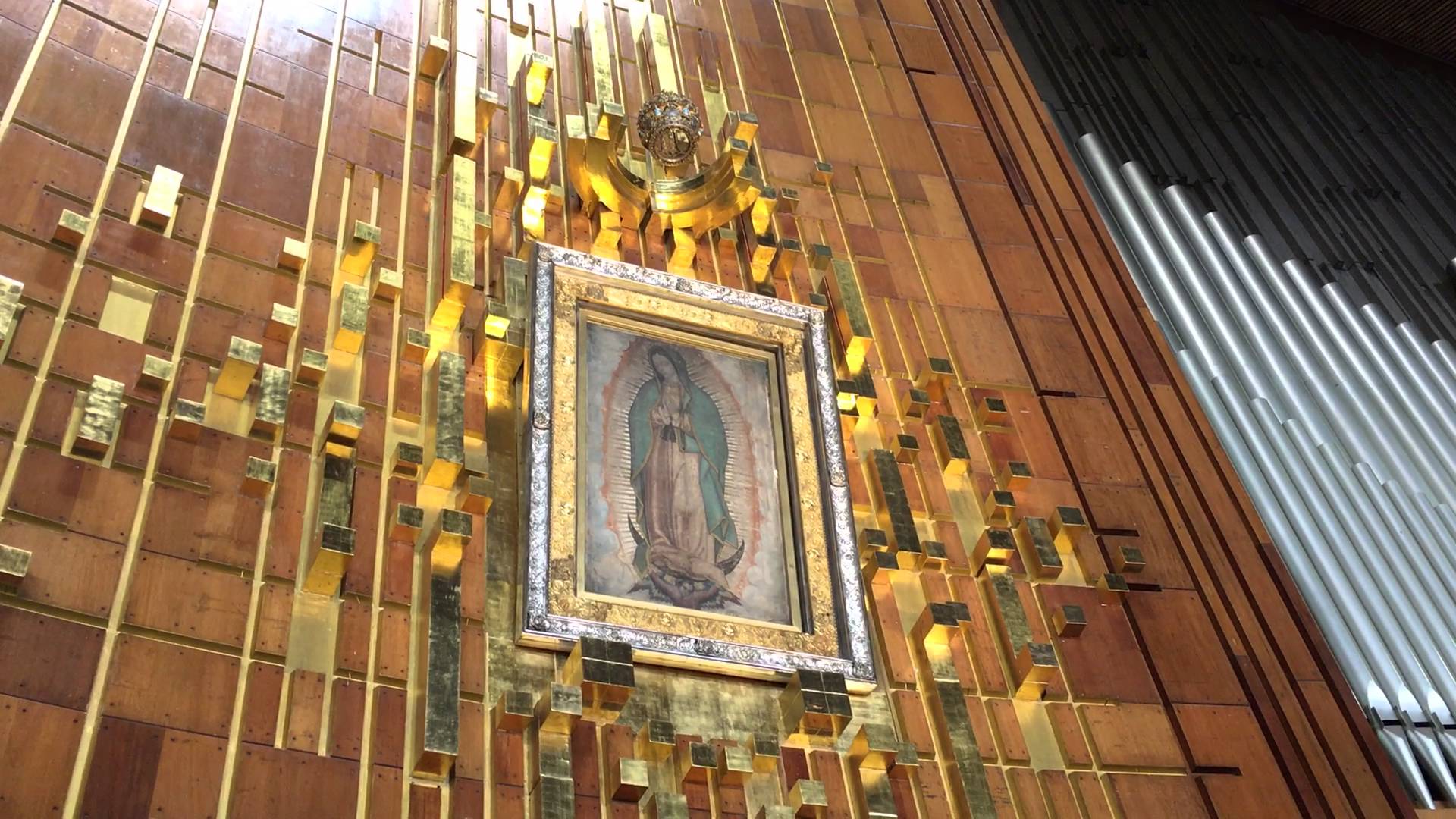
Matthew Leonard, Executive Director of the St. Paul Center for Biblical Theology:
In the fifteenth and sixteenth centuries, the native people of Mexico City suffered conquest first by the Aztecs and then by the Spanish conquistadores. It was the custom of the Aztecs to harvest the conquered people as victims for human sacrifice, offered to the snake god Quetzalcoatl (Qweztzel-coh-AH-tul). Think Mel Gibson’s movie “Apocalypto”, though it was about Mayans. Same basic, brutal principle.
By the Aztecs’ own account, this cost a quarter of a million human lives per year. In the dedication of just one temple, a celebration lasting four days, they slaughtered more than eighty thousand men and women. As you can imagine, these native peoples lived a life of natural and supernatural terror. Yet the fear of their idols kept them trapped in idolatry, and they resisted conversion to the Christian faith. The best efforts of brilliant missionaries proved basically ineffective.
Then, in 1531, the Blessed Virgin Mary appeared in Mexico City to a peasant man named Juan Diego.
Read the rest here.
In Assisi in 2005, my wife and I met an American priest named Padre Sisco. He gave me his contact information, which I, of course, misplaced. This guy was unbelievable – on the off chance any readers out there know him, I’d love to get in touch. He wrote his doctoral dissertation on homilies preached in Mexico following the appearances of Our Lady of Guadalupe, and the miraculous image she left behind.
That would make for some pretty incredible reading – over eight million Mexicans, by some accounts, converted to the faith in just a few years as news of these events spread. As Leonard notes, Mexico had been stubbornly infertile mission territory prior to 1531.
I’ve always found it fascinating that, while the Church on the Continent in the 16th century was being fractured by Luther’s revolt and the events that followed, the most effective evangelistic movement in the history of the world was taking place at the exact same time in the Americas.
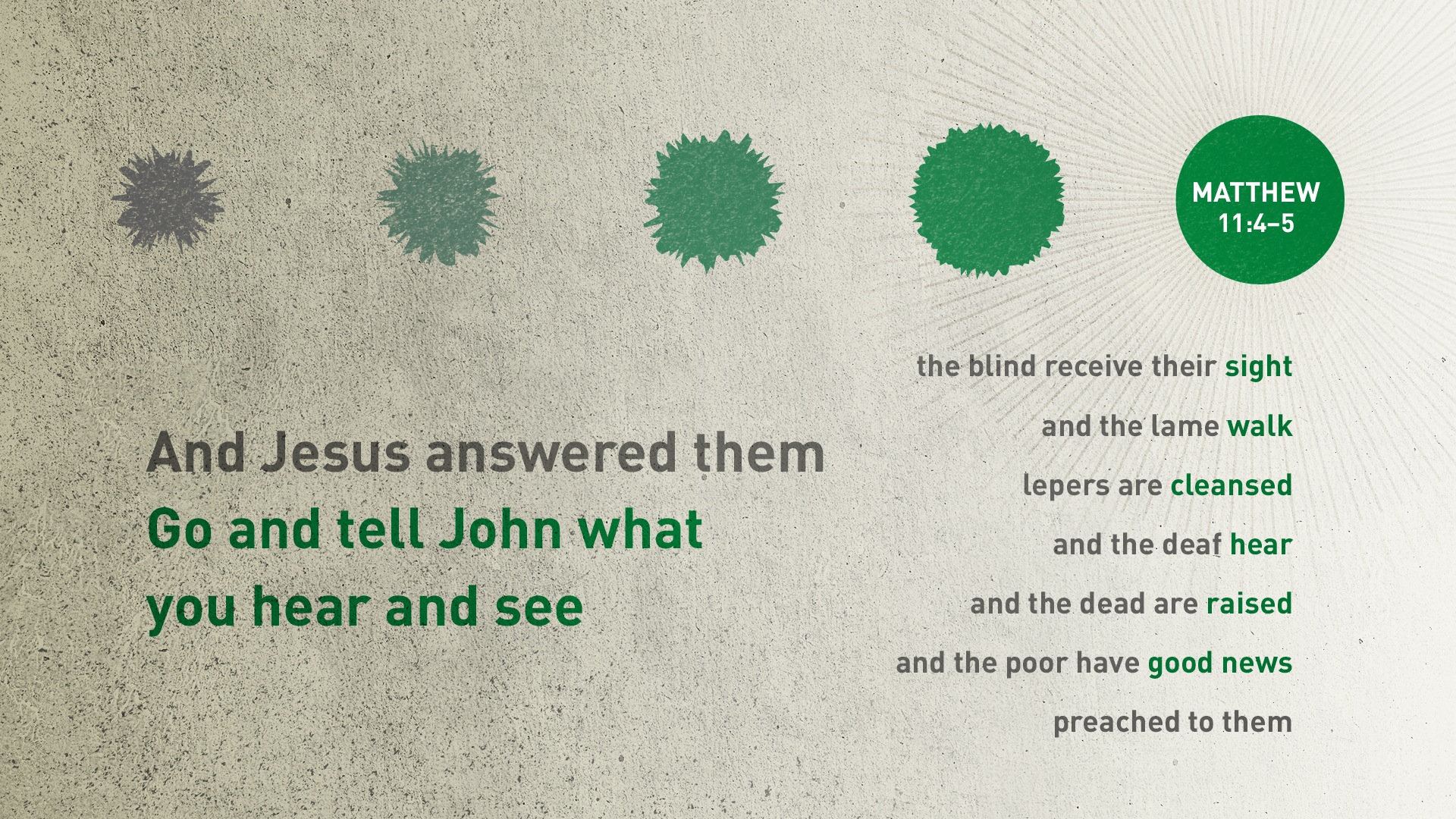
In this Sunday’s Gospel reading (Matt 11:2-11), John the Baptist, who by this time has been imprisoned by Herod, sends messengers to ask Jesus if he is the promised Messiah. Have you ever wondered why John did that? Have you ever wondered why Jesus doesn’t simply answer, “Yes”? Read on!
Indeed, Jesus’ reply to the imprisoned John the Baptist (Matt 11:2–6; cf. Luke 7:18–23) is seen by some commentators as not Messianic. Some have even gone so far as to suggest that Jesus never personally believed he was the Messiah. When asked “Are you he who is to come, or shall we look for another?” (Matt 11:3), Jesus answers in what appears to be a vague manner, using words from Isaiah 61: “Go and tell John what you hear and see: the blind receive their sight and the lame walk, lepers are cleansed and the deaf hear, and the dead are raised up, and the poor have good news preached to them. And blessed is he who takes no offense at me” (Matt 11:4-6).
A very important clue as to why Jesus answered the way he did was discovered in the Dead Sea Scrolls. The Scrolls were written roughly around the time of the Advent of Jesus Christ – between the last three centuries BC and the first century AD. Although they were composed by a sectarian, apocalyptic Jewish sect, they do shed light on what Jews who were roughly contemporaneous to Jesus believed about the coming Messiah.
One of the most important Scrolls that was discovered, known as 4Q521, says this:
For the heavens and the earth will listen to his Messiah…For he will honour the devout upon the throne of eternal royalty, freeing prisoners, giving sight to the blind, straightening out the twisted…and the Lord will perform marvellous acts…for he will heal the badly wounded and will make the dead live, he will proclaim good news to the meek, give lavishly to the needy, lead the exiled, and enrich the hungry.
One can easily see by comparing these two texts why it was that John asked the question about Jesus’ Messiahship, and why Jesus replied the way he did. It was assumed that when the Messiah arrived, according to 4Q521, “prisoners would be set free”. The righteous John, at this time languishing in Herod’s prison fortress at Machaerus, is wondering why Jesus hasn’t sprung him in a “prison break” of sorts. Jesus replies to John by noting that his marvellous works indeed match up with the deeds of the expected Messiah, in line with the teaching of Isaiah 61 and 4Q521. For Jesus to be any more explicit than this would arouse the attention of the secular authorities, prior to the completion of his Messianic mission. However, attentive Jews would have understood Jesus’ claims. Thus, in a culturally relevant manner, Jesus is inviting his fellow Hebrews to consider the evidence of his ministry and draw their own conclusions.

This Sunday is the Church’s “New Year’s Day”, as it were. It’s not only the first Sunday of Advent, but also the beginning of a new liturgical year in the Church. It’s a great time to start over, start fresh, and try to live our faith better. So, as we make our Catholic “New Year’s resolutions” about how to live Advent well, we need to keep some important points in mind:
The first thing we need to remember is that the season of Advent is not the season of Christmas! This is very difficult for us to do, because our culture has completely forgotten this truth. The culture at large wants to either A) eliminate all religious references to the season at all – for example, calling it simply the “Holiday Season”, or B) celebrating Christmas prematurely, within the season of Advent.
In the first case (A), cultural relativism – with a particularly virulent hatred for Christianity – seeks to eliminate all references to the divine at this time of year. But we really can’t escape the truth. Even the word “holiday” actually means “holy day”.
However, for Catholics, the second problem (B) is much more of a temptation. It has become quite common for people to “pull back” the feast of Christmas into Advent. The Church teaches us that Advent is actually (much like Lent) a season of penitential preparation for the great Feast of Christmas. This is one reason why many dioceses have an annual “Advent Confessions Day”, just as in Lent. This is also why Mass readings during Advent focus on the Second Coming of Christ and the Great Judgment – we need to put our lives in order and be ready to meet the great King.
The Church even encourages fasting during Advent. Without a fast, there can be no feast at Christmas. Other penances, like prayer and giving to the needy, get us spiritually ready for Christmas (cf. CCC 1434).
In stark contrast, cultural practices like office Christmas parties and other festive gatherings prior to Christmas encourage sumptuous feasting – and tragically, in so many cases, dissolute and downright dreadful debauchery. One should take to heart the words of Saint Paul from this Sunday’s second reading:
Brothers and sisters: You know the time; it is the hour now for you to awake from sleep. For our salvation is nearer now than when we first believed; the night is advanced, the day is at hand. Let us then throw off the works of darkness and put on the armor of light;
let us conduct ourselves properly as in the day, not in orgies and drunkenness, not in promiscuity and lust, not in rivalry and jealousy. But put on the Lord Jesus Christ, and make no provision for the desires of the sinful nature (Romans 13:11-14).
Prayer, penance, and preparation. That’s the recipe for living Advent well. The great Feast of Christmas will be all the sweeter for us as a result.

In this Sunday’s Second Reading (33rd Sunday in Ordinary Time), we heard Saint Paul address the Thessalonians:
Brothers and sisters:
You know how one must imitate us.
For we did not act in a disorderly way among you,
nor did we eat food received free from anyone.
On the contrary, in toil and drudgery, night and day
we worked, so as not to burden any of you.
Not that we do not have the right.
Rather, we wanted to present ourselves as a model for you,
so that you might imitate us.
In fact, when we were with you,
we instructed you that if anyone was unwilling to work,
neither should that one eat.
We hear that some are conducting themselves among you in a
disorderly way,
by not keeping busy but minding the business of others.
Such people we instruct and urge in the Lord Jesus Christ to work quietly
and to eat their own food.
– 2 Thessalonians 3:7-12
Saint Paul is extremely forceful and commanding in his instructions to the Thessalonians here – and, by extension, to us. He speaks to both wrongdoers and the congregation as a whole with power: “We command and exhort you…in the name of our Lord Jesus Christ”. This is the strongest language Paul could have used. And what does Paul command? That certain people in the congregation stop being “disorderly” (which is sometimes translated as “idle”).
It’s not necessarily the case that these people were idle in the sense of being inert or slothful – “couch potatoes”, as it were. In fact, it appears they were quite “busy” in their own way – but not in a good way. They were being what Paul calls “busybodies”. That is, they were spending a lot of time and effort “meddling in the affairs of others” – literally, “minding other people’s business”. The so-called “work” that they were doing was not at all productive or helpful for the community. Rather, it was downright disorderly and harmful.
One is reminded of a maxim from Saint Josemaria Escriva:
You are untiring in your activity. But you fail to put order into it, so you do not have as much effect as you should. It reminds me of something I heard once from a very authoritative source. I happened to praise a subordinate in front of his superior. I said, “How hard he works!” “You ought to say”, I was told, “ ‘How much he rushes around!’”
You are untiring in your activity, but it is all fruitless…How much you rush around!
– Furrow, 506
Mere “busyness” can actually be a hidden form of laziness and love of comfort, not to mention disorderliness. Sure, a person can be running around, doing a whole bunch of “stuff” – but they are not the things the person ought to be doing.
There is also the very real temptation of being a “busybody” in another sense – that of being a gossip. This has always been a temptation whenever and wherever people live together, but it is a constant temptation in parish life – for both clergy and laity. As disciples of Jesus Christ, we simply must stop speaking about others behind their backs.
Saint Paul set the Church a powerful example in this regard, by doing hard, constructive, and productive work (in his case, as a tentmaker). He provided for his own needs, and even those of others, so that he was not dependent on anyone else (cf. 1 Thess. 4:11-12). Although, as an apostle, Paul could have received his living from the congregation, he chose not to. He did this so that he could provide a model for how his disciples should live in the world as Christians.
Saint Paul shows that work well done for God’s glory in any honest profession is the “hinge” of our sanctification in the world. We can sanctify our work, we can sanctify ourselves through our work, and we can also sanctify others through our work.



